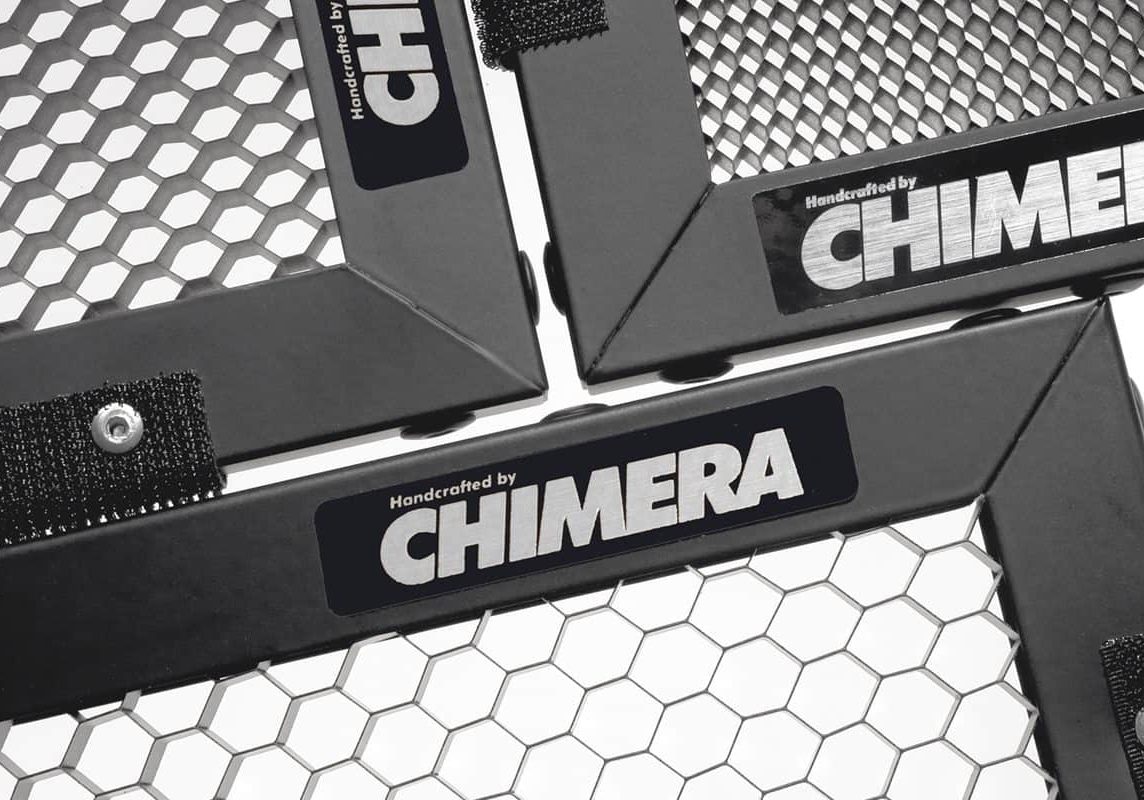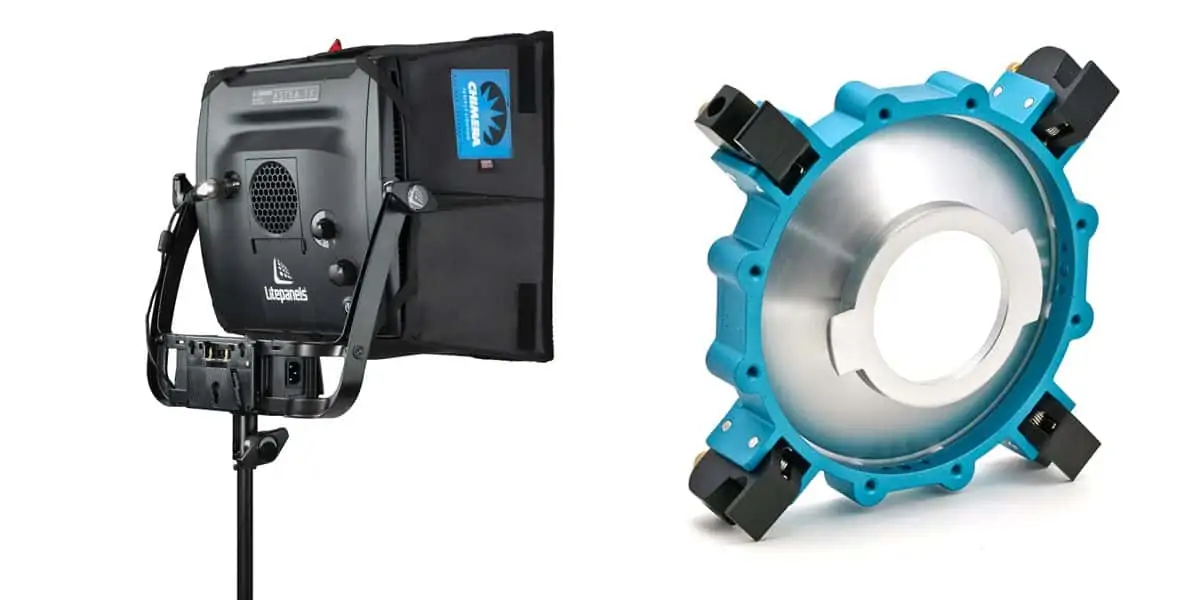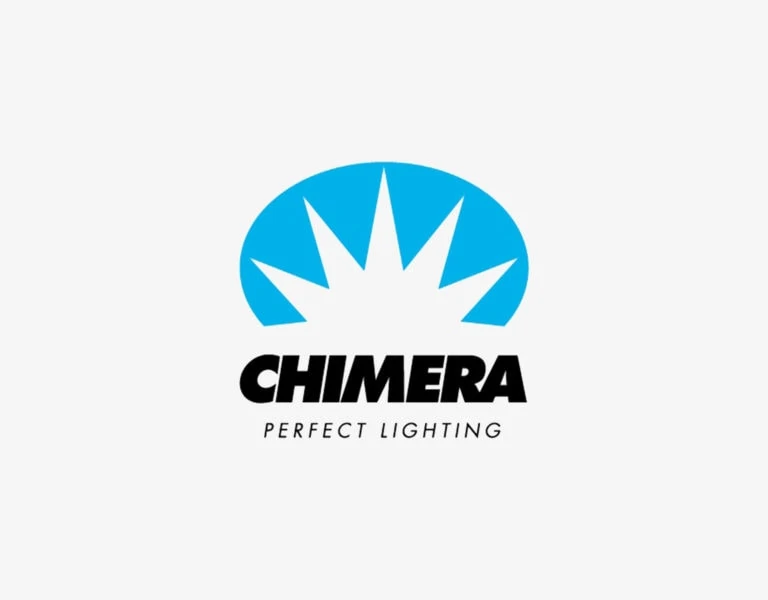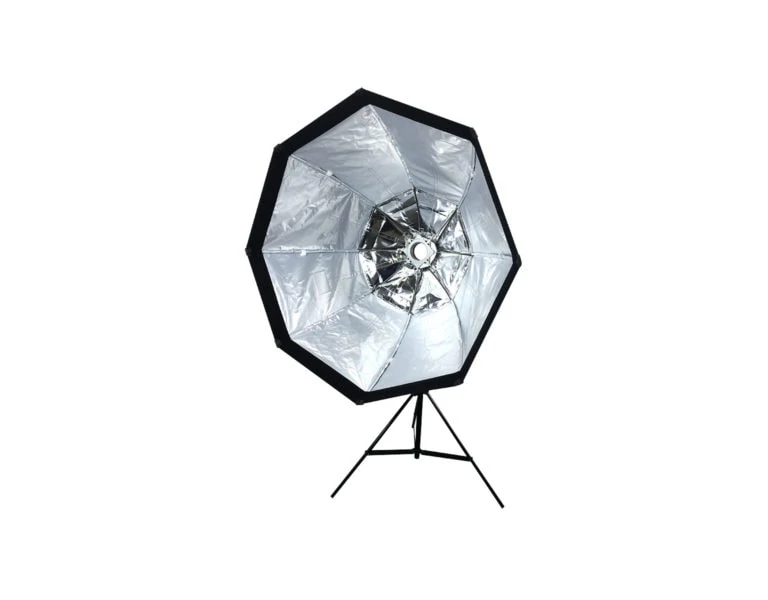A higher level of illumination
Spotlight / Chimera Lighting

A higher level of illumination
Spotlight / Chimera Lighting
BY: Michael Burns
Born out of a desire to provide a kinder and more controllable light source for portrait photography, Chimera Lighting has become a significant name in movie and video lighting, but it’s never forgotten its roots.
A garage at the Colorado home of Tom Frost, a climber, photographer and engineer/designer, provided the first product for the nascent company. The Illuminata Lightbank, a collapsible modifier, was designed by Frost, based on sketches by co-founder Gary Regester, an advertising and album cover photographer.
Founding Chimera in 1980 with wives Dorene Frost and Joanie Regester, they started selling light banks at tradeshows, taking advantage of local sewing talent to assemble the fabric panels cut by Frost. Success with the Illuminata provided the foundation to purchase a building in the Boulder area.
According to sales marketing director John Fuller, the company has continued to create products that keenly address the needs of its customers, but retain the practical and portable nature of that earliest, garage-built design.
“Arguably, the first Lightbank Illuminata resulted from a need for softer photographic lighting, and was inspired by the design of compact and rugged high altitude tents,” says Fuller. “Since then Chimera has gained and continues to gather inspiration from our creative users worldwide.”
“When asked to create a source for our Lightbanks, we developed the Triolet, which is still very popular,” adds Fuller. “It’s small, compact and lightweight, with the option of using many available lamps, globes or bulbs, up to 1kW Tungsten. It can be installed in most Chimera Lightbanks. The Triolet can be used to compliment many other lights, or used standalone with almost any Chimera Lightbanks, up to the massive F2X overhead.”
Then there is Octaplus 57. “This was created to be different from all the other softboxes in the photo industry, by creating a very large illuminated surface and delivering light that literally wraps around its subject,” says Fuller. “When the film industry discovered them, we began making them for high heat tungsten and HMI lights.”
During the late 80s, cinematographers began to use Chimera lightbanks in greater numbers, and the brand achieved mainstream Hollywood recognition with Fried Green Tomatoes (1990), which saw gaffer Mo Flam and DP Geoffrey Simpson use Chimera equipment.

As the body of customers changed and evolved, so has the industry. “The biggest change has been the switch from tungsten and HMI lighting to a variety of LEDs.” says Fuller. “While the industry still uses high heat sources of lighting, LEDs have really taken off, particularly over the past several years. Chimera has adapted to these new light fixtures with, innovative mounting designs, material and shapes to make the most out the light sources. Creating new lightbanks to meet the needs of the ever-changing LED market is keeping us very busy.”
The company’s strong growth continues to the present day. Recent senior staffing additions, including Fuller, who brings over 30 years of industry experience to the company, and Ron Hunt, a long time Hollywood veteran in lighting supply and manufacture, as general manager, leave Chimera well positioned to continue its industry outreach well into the future.
Today Chimera has a number of very popular, stand-out products among its film and video range. “All of our products are well-liked in rental houses around the world because of their durability, longevity, craftsmanship and high-quality light output,” Hunt explains. “Chimera takes great pride with the R&D on our products to make sure that what is created does not change the quality of a light but improves and enhances it.
“With the popularity of the ARRI SkyPanel, all accessories for that fixture are finding great interest and demand,” adds Hunt. “This includes SkyPanel Lightbanks and Lanterns. Our Octaplus banks with up to 7-foot aperture are very popular with many fixtures, as are all of the Chroma-Q Space Force accessories, including skirts and lanterns, due to the increased use of that fixture in studios.”
"All of our products are well-liked in rental houses around the world because of their durability, longevity, craftsmanship and high-quality light output. Chimera takes great pride with the R&D on our products to make sure that what is created does not change the quality of a light but improves and enhances it."
- Ron Hunt, Chimera General Manager
The softbox fabrics are still all sewn by hand by local sewers, and all products are hand assembled at the Colorado facility.
Another big success for Chimera has been its speed rings – a component which allows the banks to be effectively mounted to a light fixture or strobe – and like the lightbanks, the range has grown in size and diversity.
“For the banks to keep their shape consistently, the fabric must be kept under continuous tension,” says Hunt. “The old light sources always came out of a round hole, and the rings gave Chimera the way to mount square, rectangular, and now octagonal light banks to the round fixture. As lights have evolved into LED and the form is similar to the aperture of the lightbanks, we have been able to adapt to some simpler mounting techniques.”
Other popular items include lanterns, Universal 1x1 lightbanks for popular LED panel lights, Quartz and Daylite Lightbanks.

Today Chimera lightbanks and products are used in almost every studio for broadcast, stills and motion pictures. Among many high profile users are cinematographers Charles Papert, Greig Fraser and Peter Holland. DP Andrew Shulkind has notably been using Lightbank softboxes and Chimera speed rings on his commercial VR work for major clients.
The company is also investing in its own future, with the Chimera EDU programme. “It’s a way to reach out to and give back to educational institutions that have helped our award winning users,” explains John Fuller. “The programme includes educational seminars, product loans and occasional, selected discounted product offerings to educational institutions.”
Like the industry it services, the company is still evolving. Chimera recently purchased and moved into a new Colorado facility, a few miles from Boulder.
“With the new space and layout, a more efficient manufacturing process flow has been realised, which has also provided room for future growth,” says Hunt. “The new studio will also provide a great facility for testing new products, in the effort to provide continuing development of products for an evolving imaging industry.”

